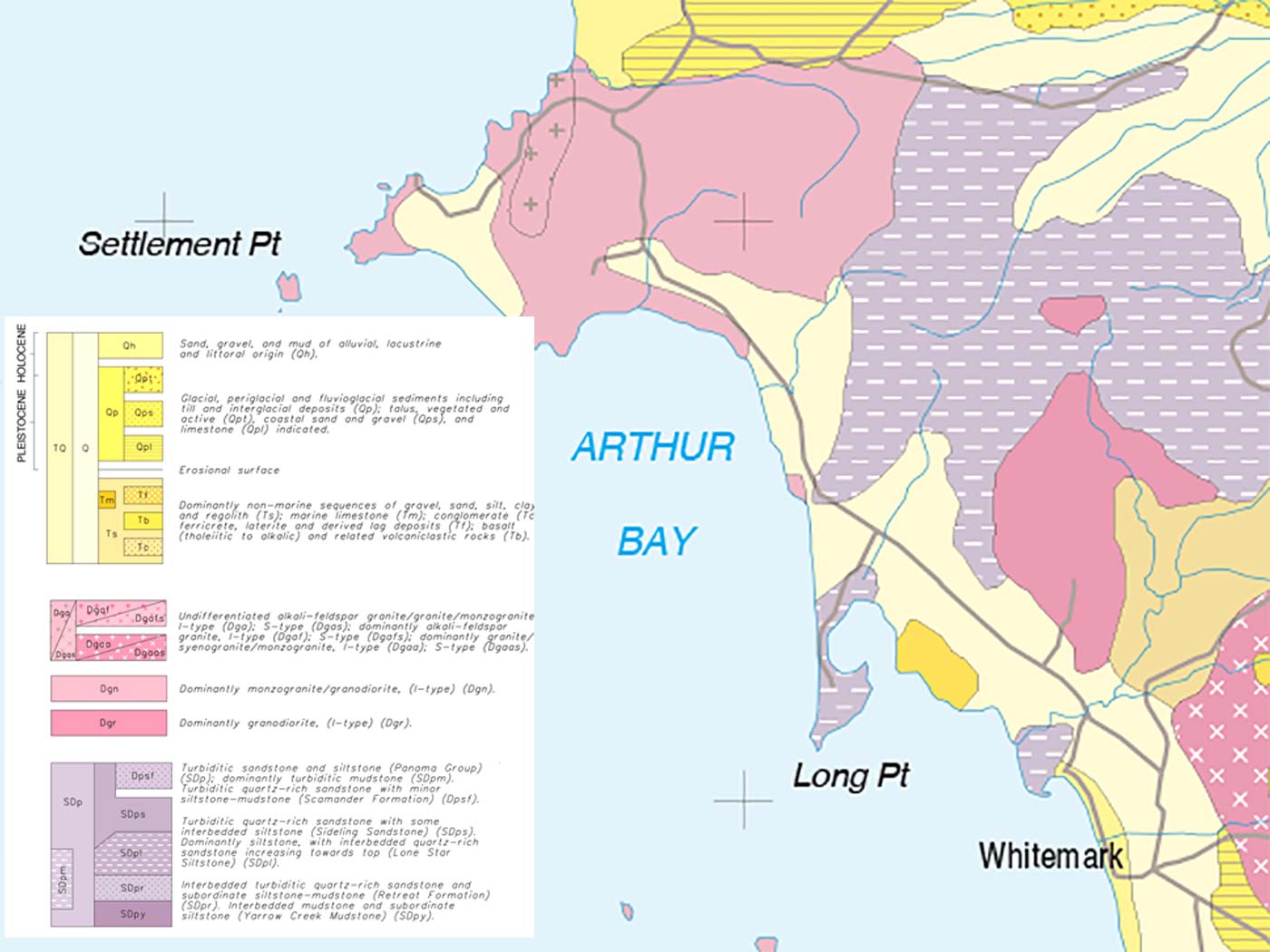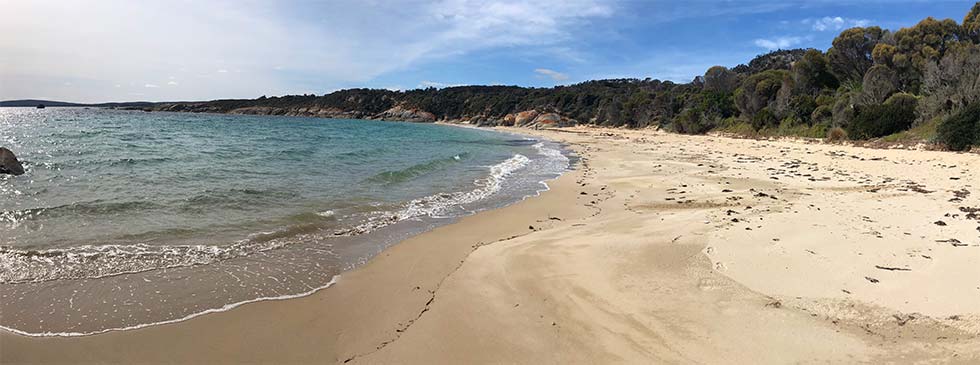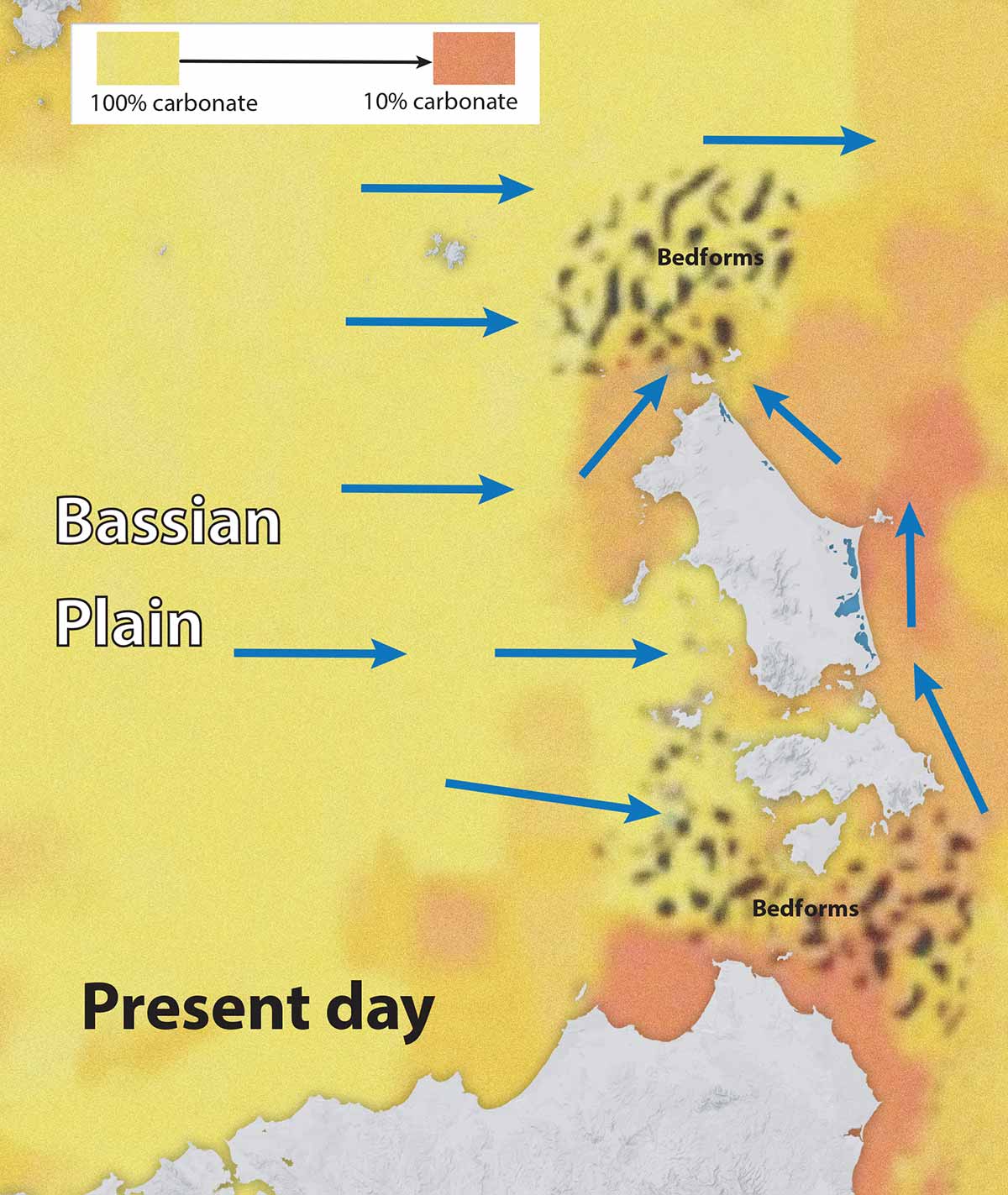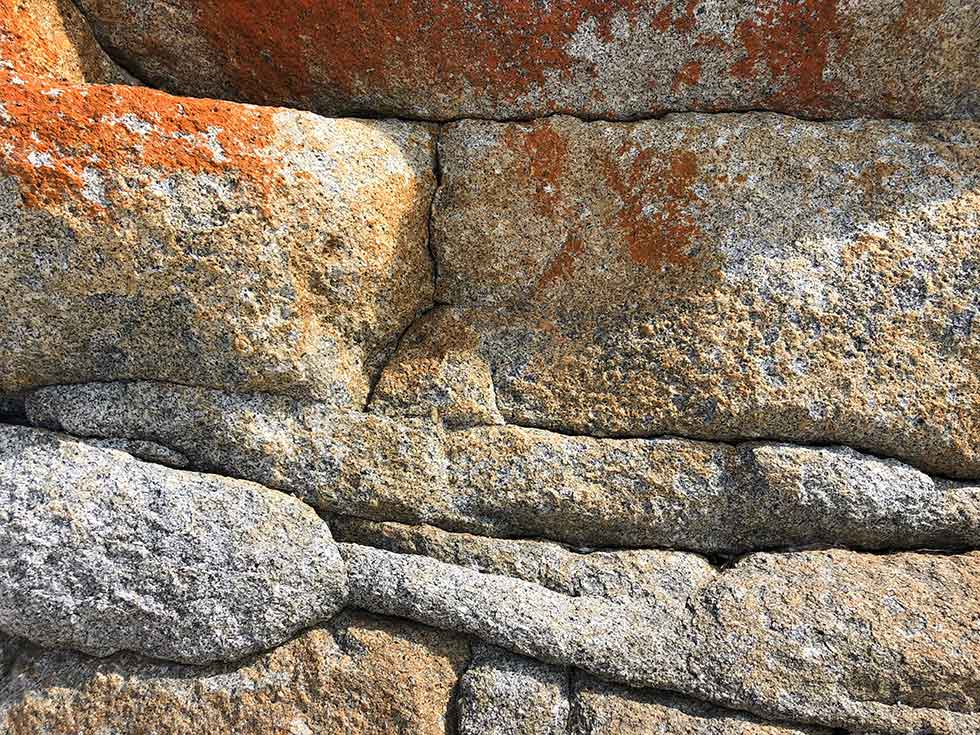When you walk on Allports Beach you are strolling on mineral sands made up of materials eroded out of the granites.
Previously over much of the past 2.5 million years however, beach sands on the western edge of Flinders Island mostly came from the calcium rich shells of dead marine animals - much as are found on beaches in the tropics are today.
Driving through the granites
Even looking at an old geological map of the island today it's striking how much granite countryside you drive past on your way into Allports Beach in the precinct originally known as Port Davies.
These granite landscapes tell us much about the detail of the rock outcrops we see today exposed in places like Allports Beach

The Darling Range countryside around here is interesting in that whilst it's granite, it has significant compositional differences to the Strzeleckis.
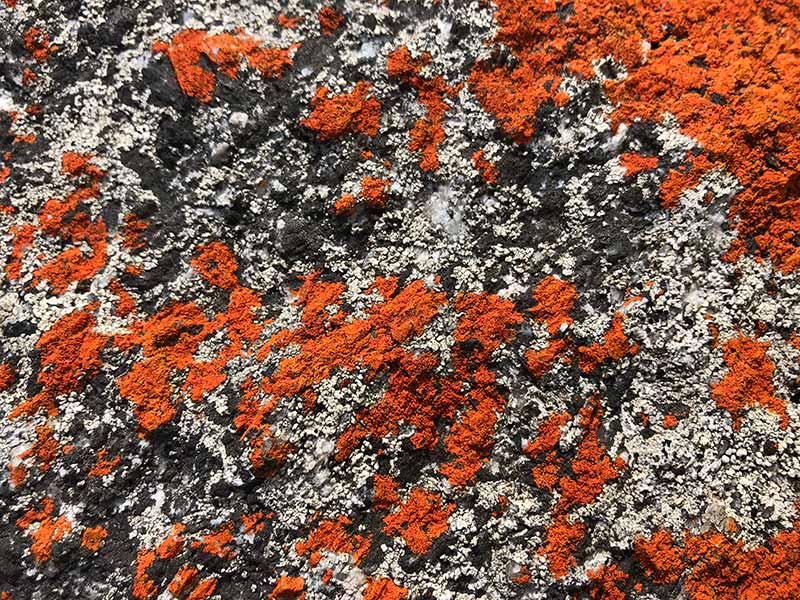
These two rock intrusions were probably separate bodies of magma that have come up through the crust. There they sat as magma under the earth's surface just bubbling away while it slowly cooled over millenia.
This is not like other volcanic events where the rock comes to the surface, explodes out and cools quickly.
These magma chambers don't have a conduit connecting them to the ground surface.
There may have been a vent but that would have been eroded away. The fact that the big feldspar crystals exist means that they took a long time to grow so the magma slowly cooled in place underneath the earth’s surface.
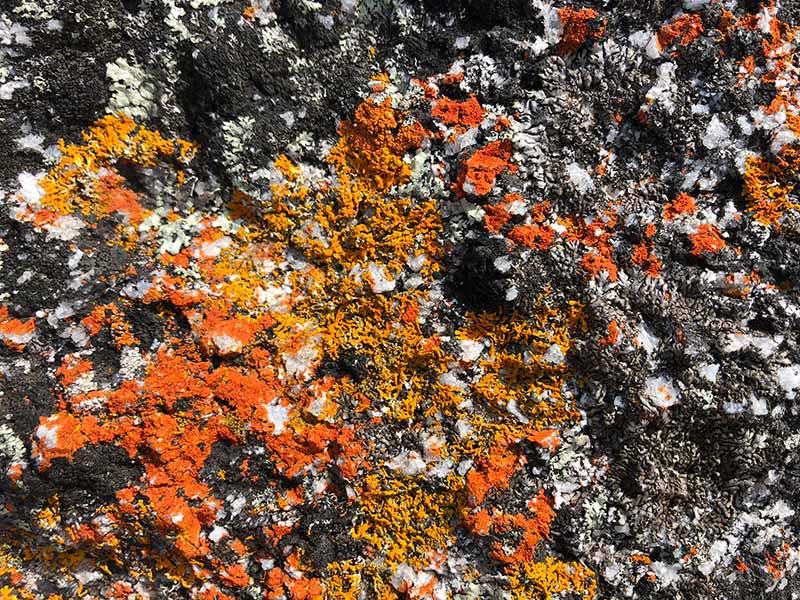
The granites we see around Allports Beach are actually a form called granodiorite.
Compared to the other granites around the south of Flinders Island these have a lot less silica and a lot more iron and magnesium.

Instead of being composed of quartz, feldspar and mica this rock is predominantly composed of quartz, feldspar and hornblendes so it's full of black clasts.
